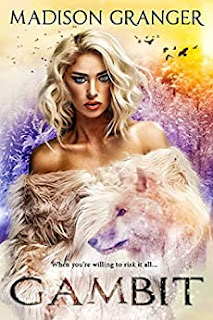A Change in Perspective: Understanding POVs in Writing
Writing a story of any kind comes with its own collection of characters and sometimes it's hard to tell who's telling the story. It can be fun to mess with perspective in your writing, but it can also be dangerous.
I had a story I was writing for an anthology that was told in third-person, from the perspective of the male main character. Meaning, that it was completely focused on my male MC- his emotions, his thoughts, and the way he was seeing things.
In this story, Midnight Magic, Aiden is accompanied by three other characters. There's Sabrina, Marshall, and Penny. Aiden's focus starts off completely on Sabrina, so the story talks a lot about what he feels when he looks at her, his memories of her, and how he watches her trade in one guy after another for a newer model.
Since both Sabrina and Marshall were side characters, it wasn't hard to keep them out of the narrative. They were there because of the plot but how they felt and saw the world did not influence Aiden. However, Penny showed up.
When I started writing I'd fully intended for Aiden to end up with Sabrina, so Penny was an afterthought. She kind of just popped up out of nowhere. Literally. I was writing a scene at a gala and Marshall was all, "Here, meet this chick" and then...boom...Aiden and she had an instant connection. Penny quickly took on elements of a main character and Aiden's focus started shifting to her. The problem was that my focus was also shifting to her.
At one point in the editing process, I received a note from my editor saying, "You switched perspectives. Penny's telling the story now."
My initial reaction was, "Nuh uh," but then I read the paragraph my editor highlighted and she was 100% correct. I'd unconsciously switched to Penny and instead of the story saying something like, "Aiden couldn't help but think Sabrina had chosen the perfect dress," it sounded like, "Penny pursued her lips as she noticed Aiden's stare lingering a bit too long on Sabrina's curves." This completely changed the feel of that paragraph and could have caused a hiccup for readers if left uncorrected. Needless to say, as much as I adored Penny's paragraph it had to go. I had to keep the focus on Aiden.
Like in life, sometimes our focus will shift in writing and we have to be conscious of that. When it happens we need to ask ourselves, why? The answer might be that it just happened spontaneously, or it might be that you're telling the story from the wrong perspective.
In the case of Aiden and Penny, I knew Penny's perspective was wrong. Midnight Magic is Aiden's story. Penny is, for lack of a better term, always a bridesmaid and never a bride. I don't think she'll ever have her own story, but she'll play a role in several.
In another instance, I've had to shift perspectives altogether. I was working on another short story and something wasn't working. I liked the character and the plot but the narrative felt off. So, I closed my laptop, pulled out a notebook, and started completely from scratch. Behold, the story's perspective completely changed. Instead of being from the main guy's point of view, it was from the main girl's.
I know it sounds a little corny, but you'll know if your story isn't being written from the right perspective. You'll have to force the story if it is.
Another thing to be mindful of is point of view. Point of view [POV] is often used interchangeably with perspective but it's not exactly the same thing. Think of it like you're standing in a room with two other people. All of you are in the same space, with the same temperature, the same sights, and the same sounds, right? No. Not at all.
Person one is you, person two is someone narrating your life to you, and person three is narrating the entire situation in an unbiased way. To help break this down, I've created some graphics for you.






Comments
Post a Comment